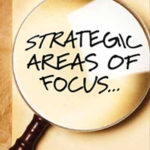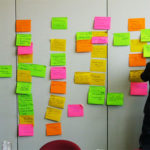Recently, SchoolTutoring Academy published a blog entitled, “4 Simple Steps to Increase Your Problem Solving Mastery”. This blog offered a generalized approach for all types of problems, including the problems that occur while writing essays. I encourage you to check out that blog (here’s the link to it: https://schooltutoring.com/blog/4-simple-steps-to-increase-your-problem-solving-mastery/) because it is a great place to start, but essay writing is an incredibly important skill, moreso than many people realize. It is for that reason that this blog exists: how to successfully write an essay is a topic that deserves a post all it’s own!
Now, some students find essay writing to be a relatively easy task, but for other students, it is difficult and frustrating at the very least. Regardless of of the level of difficulty students face though, all of them have to write an essay for their classes at some point. This guide will try to give you a more detailed look at the strategies that you can use to make writing essays easier and more manageable.
Consider the Assignment
 When a teacher or a professor assigns an essay, he/she will normally go into good amount of detail as to what needs to be done. University or college professors might not explain an essay as much as a high school teacher might, but don’t forget: no educator wants you to fail. And teachers and professors alike are always there to ask for help if needed.
When a teacher or a professor assigns an essay, he/she will normally go into good amount of detail as to what needs to be done. University or college professors might not explain an essay as much as a high school teacher might, but don’t forget: no educator wants you to fail. And teachers and professors alike are always there to ask for help if needed.
There will often be a marking rubric that outlines what teachers expect from their students’ papers. This is a fantastic resource, and you should make sure to continually refer back to it while working on your essay.
Your teacher or professor will also let you know how long your essay should be in terms of either words or pages. This is very vital information, as it will determine how much research you will need to do, and how many points you will be able to effectively cover within the limit.
A tip: most teachers will say something along the lines of “quality over quantity”, but you should still aim to come as close as you can to the limit. Even if your teacher is not going to take marks off for not reaching the limit (very unlikely), reaching that limit gives you the opportunity to add further facts and analysis that could strengthen your essay.
You will also be informed of what exactly your essay should cover. What I am about to sat may seem obvious, but it is crucial: you must write about what is required. Sometimes, students can get carried away and write about something that relates to the topic at hand, but is not the assignment. This is one of the quickest ways that a good essay can turn bad, so be sure to read the assignment carefully. Are you being asked to show how a particular theme is represented in a single text? Or are you supposed to write about the relationship between the form of a text and the content of that same text? Do you have to compare more than one text? If it is a history essay that you are writing, are you supposed to draw a conclusion about one event? Or are you to refer to more than one historical event? Your assignment instructions will give you the answers to all of these questions and more.
Basically, it is very important to know what you need to do, before you start doing it.
Determine the Necessary Information
After you familiarize yourself with the essay instructions and you know what is being asked of you, the process of collecting the information you will need to write your essay can begin. This is the step that will vary the most depending on the type of essay that you are writing.
The first thing to keep in mind when writing an ENGLISH ESSAY is to make sure that you first read all the way through the text or texts that you plan to use. Do not make any notes during this first reading — just try to understand what the author’s purpose is, and what themes are involved. In other words, try to get a “feel” for what you are reading. After you have done this, you should start to have a good idea of how to narrow down a topic to write about; you might choose to analyze a certain theme or purpose, or another literary feature.
At this point, it is a good idea to write an initial thesis statement, if only a rough one. For those of you who do not know, a thesis statement is one or two sentences that neatly and accurately sums up what you wish to write about, and it also answers the age-old question, “So what?” Really think about this: why does what you’re writing about matter? This is not an easy question to answer, but successfully doing so can be the difference between a B and an A.
Now that you have your thesis in mind, read through the entire text, or texts, again. This time, make note of all the quotations you can find that you feel support your thesis statement. As you write them down, make notes as to why you think each quote will be useful. You might be thinking, “I’m obviously going to remember why they are important, I can skip this step”… but you’d be surprised how easy it is to forget why you originally chose a quotation after reading and writing down countless other quotations.
If you are writing a research-based essay, such as a HISTORY ESSAY, a good first thing to do would be to get a solid understanding of the events that you are going to write about. One of the best ways to do this is to find an encyclopedia entry on the topic of your choice. While you should not cite encyclopedia articles in your final paper (they are often too broad and an original citation is hard to find), they are a good starting point from which you can research the major parts of your topic. They will also often have references to other works that you may want to use as finalized sources.
After you have a strong understanding of your topic, you can write a rough draft of your thesis statement. As with the type of thesis statement written for English essays, the thesis for historical essays will accurately and succinctly depict what your essay will be about. This may include a particular place and time period in the case of a history paper, or a particular school of thought in the case of a philosophy paper. The area of focus within the essay will be defined by the field that you are writing in and what you are going to discuss. In addition, the thesis statement should tell the reader what it is that you are setting out to prove, and which points you will use to prove it.
Once you have decided on your thesis, you should begin to research. You may choose to start with the references from the encyclopedia articles that you have read, or you might look for sources in an online database or at your local library. One recent blog post from the School Tutoring Academy, entitled “Research: Uses and Techniques for Students”, explains some advantages and disadvantages of different types of sources. You can find this blog here: https://schooltutoring.com/blog/research-uses-and-techniques-for-students/. 
Just like when you are preparing an English essay, it is important to keep note of the most important information that you find when writing any kind of essay. You should also be sure to take note of why each fact or quote is important or useful to your essay, and which source the fact or quote came from. This is especially important as, in most cases, you will be asked to cite each individually.
Once you have found as much information as you think will be useful, it will be time to move on to the next step…
Organize the Information
… and that step is organizing your information! The goal is to sort the information that you have collected – quotes from one or more literary texts or pieces of information from different sources that you have researched – into categories. Most often, these categories will be dictated by what you are writing about, as well as your thesis statement.
You can choose any way you like to sort your information. For example, you might decide to write each fact or quote on a separate cue card, and then separate the cue cards into piles by topic. Alternatively, you can colour-code your list of facts or quotes. In any case, you should refer back to the notes that you made when you wrote down each fact or quote to help you categorize them. Whichever method you choose, you should have a good idea as to what you will talk about in each section — or paragraph — of your essay by the end of the process.
You may also find that you have too much, or not enough, information at this step.
If you have too much information, then you are actually in a good position. You can select only the best or most important information to include in your paper, and discard weaker points. This way, you will be able to ensure that your points are as strong as possible.
On the other hand, if you find that you do not have enough information, you will need to look for more. If your essay is focused on a particular literary text or texts, you will likely need to read through the text or texts again, to look for more quotes. If you are working on a more research-based essay, you will likely need to look for more sources, which provide further information about your topic.
Another common problem that comes to light at this stage occurs when students have chosen certain points to support their thesis for which there is not sufficient information. If you do not have enough information for a particular point and you do not believe that you will be able to find more, you may need to reorganize your main points, or come up with new ones for which you can find more evidence. You may also find that you have more than enough information for another point, in which case you may be able to split one bigger point into two smaller points. 
Typically, essays contain three body paragraphs, as well as an introductory and concluding paragraphs. This totals five paragraphs, and while the length of an essay will entirely determine how many paragraphs are needed, it is safe to assume at least three body paragraphs. Each of these body paragraphs should have at least two or three points of information, but again, this is dependant on the length of your essay. Make sure that you have this much information before moving on to the next step.
Write an Outline
By this stage, you should have all of your information split up by paragraphs. This is the time to write a complete outline for your essay. Start out by choosing the order you will put your paragraphs in. This may be done chronologically or based on importance. Different instructors have different preferences with regards to paragraph ordering, so make sure you ask which type of ordering your specific teacher wants!
![]() Once you have selected the order of paragraphs, find an order of information within the paragraphs that provides the best flow. For each piece of information, it is good to think about how you will explain it as well. It may be helpful to use the “P.I.E.” method. “P.I.E.” stands for “Point”, “Illustration”, “Explanation”. With each piece of information, start out by stating what it shows; this is the Point. Next, include the information itself, whether a quote or a fact; this is the Illustration. Finally, state how the fact or quote proves the point; this final part is the Explanation.
Once you have selected the order of paragraphs, find an order of information within the paragraphs that provides the best flow. For each piece of information, it is good to think about how you will explain it as well. It may be helpful to use the “P.I.E.” method. “P.I.E.” stands for “Point”, “Illustration”, “Explanation”. With each piece of information, start out by stating what it shows; this is the Point. Next, include the information itself, whether a quote or a fact; this is the Illustration. Finally, state how the fact or quote proves the point; this final part is the Explanation.
After using the P.I.E. method for each item of information you are going to write about, write transitional sentences between paragraphs, and the paragraphs’ topic sentences. It is important that each paragraph, though distinct, flows easily into the next.
The last parts of the outline that you will need to complete are the introduction and conclusion.
It is often helpful to think of the introduction as a funnel. Start out with a relatively broad idea — this is the wide part of the funnel. This should be both relatable to the essay and interesting — this is what is going to grab your reader’s attention! Throughout the introductory paragraph, make your statements more and more specific until you reach the final sentence, which should be your thesis. This the very tip of the funnel, and the most specific part of the introduction.
In contrast, your conclusion can be thought of as an upside-down funnel. In this paragraph, start out with a reworded version of your thesis statement. It is important not to copy it word-for-word, but it should express all of the same ideas that your thesis expresses. Following this initial statement, the rest of your statements should become more and more broad, ending on a generalized conclusion, which may demonstrate a lesson that is illustrated by your essay.
Write Your Essay
Once you have created an outline as described above, finally sitting down to write your essay should not be too difficult.
Start out with your introduction and end with your conclusion, both of which you should have written in the outline stage. In between, start each paragraph with a topic sentence and end each paragraph with one of your transitional sentences, to ensure that the essay flows nicely from one point onto the next.
Within each paragraph, simply expand your P.I.E. points into full sentences. You will almost certainly need to include transitional words and phrases to keep a flow within the paragraphs. 
After you have put everything into full sentences and put it all together, read through your essay to make sure that everything sounds good, and that there are no mistakes in spelling or grammar. If possible, have someone else read through your essay as well – they might be able to point out things that you did not notice in your own writing. Once you and possibly a peer have proofread your essay, you should be ready to hand it in!
It is important to prepare properly when writing an essay, and not just so your essay is technically written correctly. You’ll make it a lot easier on yourself when it comes time to write your essay if you plan adequately and efficiently.
SchoolTutoring Academy is the premier educational services company for K-12 and college students. We offer tutoring programs for students in K-12, AP classes, and college. To learn more about how we help parents and students in Calgary, AB visit: Tutoring in Calgary, AB.




